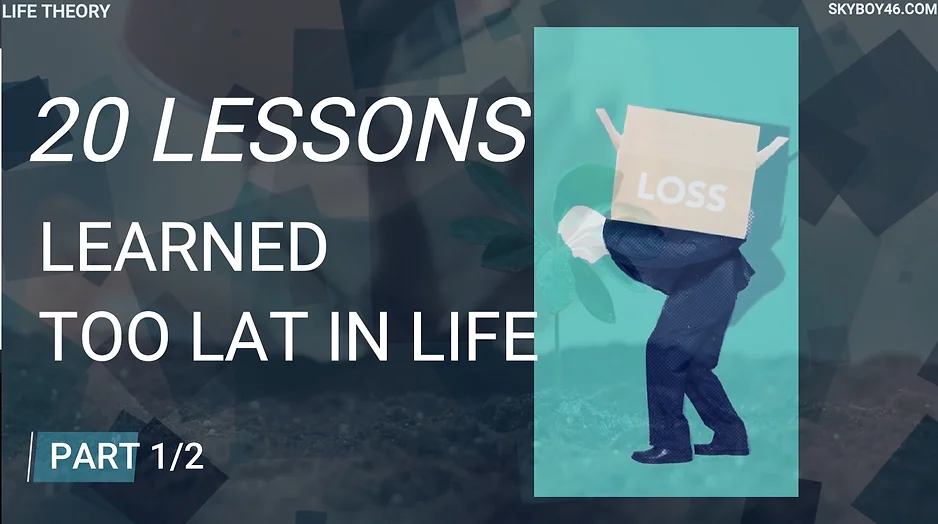Don’t Want To Read?
Watch/Listen To The Full Video on YouTube
Space isn’t just a physical concept; it deeply influences how we feel and think. By understanding both physical and experiential space, and applying simple tools like decluttering and organizing our environment, we can enhance our mental clarity and well-being. Transform your surroundings to transform your mind.
SUBSCRIBE: https://www.youtube.com/@LifeTheory46
Unbound Wisdom – Two Concepts of Space – Life Stories 214
It’s so easy to overlook, but there’s a fundamental insight we often forget: everything we experience is framed within space. Whether it’s a visit to a museum, a breathtaking landscape, or a late-night dinner with friends, every moment unfolds on a spatial canvas. And space isn’t just physical—it’s psychological too. We use phrases like “I need personal space” or “I don’t have the mental space for that right now,” because space influences more than just what’s around us. It shapes how we feel and how we think.
So, what exactly is space? Today, we’re giving you the inside track on this crucial concept and offering you practical tools to master it. As Immanuel Kant said, abstract information without application is pointless, but a list of tools without background knowledge is equally blind. You need both, and we’ve got you covered. So let’s get started.
When we think about space in its most basic form, we usually think of physical distance. How far apart are two cities? How many miles between one place and another? That’s physical space, which we can measure using units like miles or kilometers. For example, New York City is 204 miles from Washington D.C. We can all agree on that distance because it’s an objective measurement.
Physics helps us understand this concept of space. Back in the day, Isaac Newton saw space as an absolute container, a uniform, universal backdrop where everything takes place. But then Albert Einstein came along with his theory of general relativity and flipped that idea on its head. For Einstein, space wasn’t just a backdrop; it was intertwined with time, forming spacetime, and could be bent by gravity. Space was relative, influenced by the mass of objects within it.
Key takeaway: physical space is objective, invariant, and unbounded. It’s objective because anyone can measure it with a common metric, invariant because it works the same way between any two places, and unbounded because it’s limitless. Some theories even suggest that space could be infinite.
Now, that’s physical space. But what about the space we experience, the space we feel? This is what we call experiential space. Look around you right now. Everything you see is in relation to everything else. Your body exists in space, and each part of it—your hands, your feet, your head—relates to the other parts. This kind of space feels more intimate, more connected to how we perceive the world around us.
Neuroscience gives us insight into this experiential space. The Integrated Information Theory, proposed by neuroscientist Giulio Tononi, suggests that the space of our consciousness depends on how neurons in the brain interact, like a grid. No grid, no space. Another theory, the Temporal Spatial Field theory, suggests that the way neurons fire and form spatial structures determines our conscious experience of space. No neural activity, no sense of space.
Key takeaway: experiential space is subjective, variable, and bounded. It’s subjective because only you experience your own space in your own way. It’s variable because your sense of space can shift with factors like drugs or brain conditions. And it’s bounded because you can’t see or feel what’s behind your head—you experience the world through a kind of forward-facing cone.
Now that we’ve got the basics down, let’s talk about how to use this knowledge to your advantage. The idea here is simple: by changing the physical space around you, you can improve how you experience space—and boost your mental performance and well-being in the process.
Here are some powerful tools to help you do just that:
Tool 1: Declutter Your Space
Your physical environment directly impacts your mental health and efficiency. Studies show that a cluttered workspace can increase cortisol levels, leading to higher stress. Clear off your desk, organize your room, and make space for clear thinking.
Tool 2: Create a “Distraction Prison”
Designate a drawer or box where you can put away distractions like your phone or anything else that steals your focus. Out of sight, out of mind—and out of the way of your productivity.
Tool 3: One Space, One Purpose
James Clear, author of Atomic Habits, advocates for assigning specific spaces for specific activities. For example, your desk is for work, your dining table is for eating, and your bed is for sleeping. Your brain associates these spaces with certain tasks, making it easier to focus when you’re in them.
Tool 4: Design Your Workspace with Movement in Mind
Keep frequently used items within easy reach, but place less frequently used items further away. This encourages you to take small breaks, which can boost creativity and reduce fatigue. Get up to grab something from across the room, or walk downstairs to fill your water bottle. These mini-breaks can refresh your mind and help with focus.
These tools might seem simple, but their effects are powerful. They can transform how you work, think, and feel.
To close out today’s session, let’s take three quick breaths together. Inhale once… twice… thrice… hold… and exhale. One more time, inhale once… twice… thrice… hold… and let it all out.
We hope today’s deep dive into space has helped you see the world and your work in a new light. With your mind sharpened and your space in order, you’re ready to crush your goals. We’ll be here tomorrow, and we can’t wait to see you then.
–> Read More Life Stories Here:
https://www.lifetheory.us
https://www.lifetheory.eu
Buy all of our Life Stories & Our Premium Learning Packs. Listen or Read to them anytime you want. Have them Forever.
You can get each monthly lesson on our website at https://www.skyboy46.com/store
SHARE THIS STORY
Visit Our Store
SHOP NOW
www.skyboy46.com & www.myskypet.com
Designed For Pet Lovers & Introverted Souls
Sport, Hobbies, Motivation, Music & Art






~EXPLORE MORE~
www.linktr.ee/skyboy46


